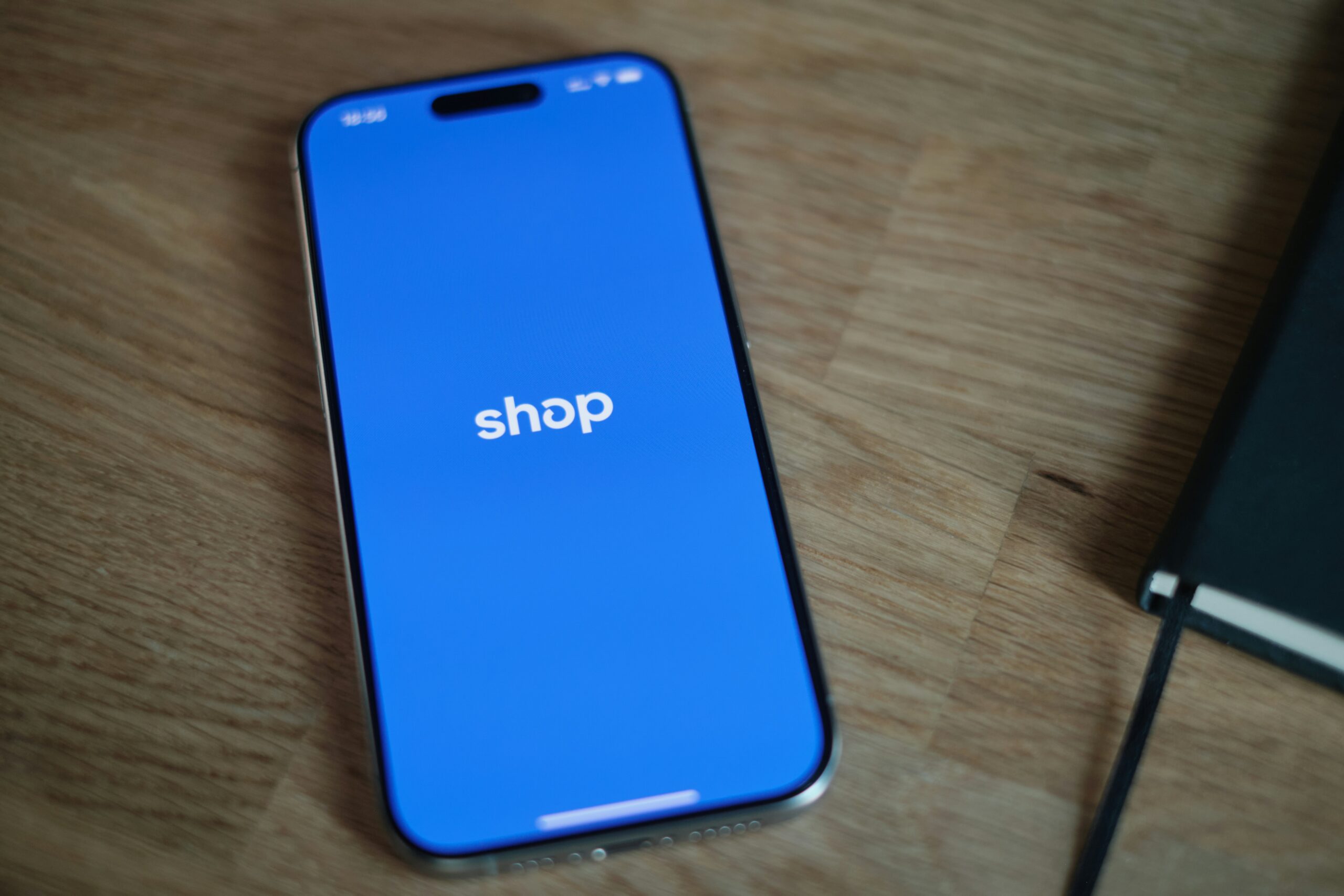Introduction to iOS Alternative App Stores
The landscape of app distribution for iOS devices has long been dominated by the Apple App Store, a controlled environment where apps are rigorously vetted to ensure compliance with Apple’s policies. However, the emergence of iOS alternative app stores has provided users and developers with additional options that deviate from Apple’s stringent guidelines. These alternative platforms allow for a broader selection of applications, often including those that may not pass the stringent review process of the official store.
The concept of alternative app stores is rooted in the desire for increased freedom by both consumers and developers. Users may seek these alternatives to access applications that cater to niche interests, provide unique functionalities, or offer experiences absent from the mainstream offerings. On the other hand, developers aspiring to create innovative apps sometimes find their creations stifled by Apple’s restrictive guidelines. Consequently, many look for alternative app distribution channels that empower them to connect with users more freely.
Historically, the app distribution on iOS has been relatively rigid. Initially, the App Store was the only viable option, which cultivated a sense of exclusivity and control for Apple. With the advent of alternative app stores, this singular control is increasingly challenged, as developers explore platforms like Cydia, AltStore, and others that permit more creative freedom. While these alternatives offer exciting possibilities, they also come with caveats such as potential security risks and concerns regarding compliance with Apple’s stringent privacy standards.
As the discussion around iOS alternative app stores continues to evolve, it is essential to understand not only the benefits but also the drawbacks of utilizing these platforms. Embracing alternative solutions introduces users and developers to a new frontier of app distribution, marked by opportunities for innovation and individuality in a landscape traditionally governed by a central authority.
The Appeal of Alternative App Stores
Alternative app stores have become increasingly appealing to both developers and users seeking a more flexible approach to app distribution. Traditional app stores, such as the Apple App Store, impose strict guidelines and policies that can sometimes stifle innovation. Developers often encounter limitations on app functionality, monetization strategies, and content, leading to frustration and hindering their creative potential. In contrast, alternative app stores offer a platform for developers to share their applications without the burdensome regulations that characterize their mainstream counterparts.
One of the primary motivations for users exploring alternative app stores is the desire for a diversified app experience. Users want the ability to access a wider variety of applications that may not meet the stringent criteria of established app stores. These alternative marketplaces frequently host apps created by independent developers who introduce innovative concepts and unique functionalities that appeal to a niche audience. By tapping into these resources, users can enhance their experience with applications that truly cater to their interests and needs.
Furthermore, alternative app stores often prioritize user privacy and data security, which has become a critical concern in today’s digital landscape. A standard expectation among users is the assurance that their data will not be exploited or tracked without consent. Many alternative platforms actively promote policies that protect user privacy, thereby attracting individuals who are wary of the extensive data collection practices sometimes witnessed in mainstream app stores.
In conclusion, the growing interest in alternative app stores is driven by the need for flexibility, innovation, and privacy. As more developers and users recognize the potential benefits of alternative marketplaces, the ecosystem surrounding mobile applications may evolve significantly, leading to a more dynamic and user-centric experience.
Popular Alternative App Stores for iOS
The iOS ecosystem is traditionally regulated through the App Store, but several alternative app stores have emerged to enhance user freedom. Cydia is perhaps the most recognized alternative app store, primarily utilized by users who have jailbroken their devices. Cydia allows access to a wide array of applications and tweaks that deviate from Apple’s restrictions, offering customization options that are unavailable through the official App Store. One of Cydia’s prominent features is its extensive repository of user-generated content, which often includes apps that improve functionality and personalization. However, using Cydia does carry risks, as jailbreaking can void warranties and pose security vulnerabilities.
Another notable alternative is AltStore, which emphasizes a different approach by allowing users to sideload apps onto their devices without jailbreaking. AltStore requires a PC or Mac to initially set up, allowing users to install apps that are not typically available on the App Store. This method provides users with the chance to experiment with applications in development or limited distribution, including emulators and other unofficial apps. While AltStore does not pose the same security risks associated with jailbreaking, it does require some technical knowledge and involves the risk of stability issues with certain apps.
Other alternative app stores include TutuApp and Panda Helper, both of which offer free and paid applications with minimal restrictions. Users can download modified versions of popular applications along with exclusive content. However, the legality and safety of downloading apps from these stores can be questionable, as they often circumvent copyright agreements. Additionally, these platforms may present risks of malware or data breaches. Overall, while alternative app stores like Cydia and AltStore provide user autonomy and expanded app availability, they also introduce various limitations and threats that users must navigate carefully.
Understanding Notarization Requirements
Notarization in the context of iOS alternative app stores refers to the process through which applications are verified for security and stability before they are allowed to run on Apple devices. This verification process is crucial as it determines whether an application is safe for installation, thus protecting users from potentially harmful software that might compromise their devices. Apple implemented these notarization requirements to ensure that users can install software confidently, even from sources outside the official App Store.
The importance of notarization lies in its ability to enhance app security. Notarized apps are subjected to rigorous checks, which include scanning for malicious code and ensuring compliance with Apple’s security policies. This not only safeguards users but also upholds the integrity of the iOS ecosystem. When users choose to download applications from alternative app stores, they must be aware of these security standards. Apps that have not undergone the notarization process might pose risks, as they could contain vulnerabilities or malware that could harm the device or compromise user data.
The notarization process impacts the installation of apps significantly. For alternative app stores to provide applications to users, they must ensure that these apps meet the notarization requirements set forth by Apple. Users must also be educated about how these requirements affect their choices, as installing non-notarized applications can lead to security warnings or failure to run altogether. This requirement assures users that even if they venture beyond the official app store, they are engaging with apps that have passed a safety threshold, thus fostering a more secure environment for exploring alternative app options.
The Process of Creating and Installing Apps from Alternative Stores
The journey of creating and installing applications from alternative iOS app stores begins with a clear understanding of necessary prerequisites. Developers must ensure that they possess a Mac computer with Xcode installed. Xcode is essential as it provides the necessary development tools for coding, testing, and packaging the app. Additionally, developers will need an Apple Developer account to manage app distributions, even if they are primarily targeting alternative platforms.
Once the environment is set up, the next step involves developing the application. This entails designing the user interface, coding the functionality, and thoroughly testing the app for bugs and performance issues. Developers may also need to consider implementing proper security measures, particularly when distributing through alternative iOS app stores. Most alternative stores, unlike the App Store, do not have strict guidelines, thus placing the responsibility on developers to maintain user safety.
After development and testing, the app must be packaged for distribution. This usually involves compiling the code and creating necessary app metadata. Depending on the alternative app store, developers may need to follow specific submission guidelines, including app descriptions, screenshots, and categorization. It is important to research the particular requirements of each store, as they may differ significantly.
For users looking to install apps from these alternative stores, they should first enable their device to accept installations from outside the Apple ecosystem. This is typically done through the device’s settings, allowing installations from trusted sources. Following this, users can download the app from the alternative store, often requiring them to trust the developer profile through their device settings before the installation can proceed. Adhering to these guidelines can help ensure a smooth and secure installation process.
Risks and Challenges of Using Alternative App Stores
The increasing popularity of alternative app stores has sparked discussions regarding the inherent risks and challenges associated with their use. One primary concern for users is the potential security vulnerabilities that come with downloading apps from unofficial sources. Unlike the official App Store, which implements strict scrutiny and review processes to prevent malicious applications, alternative stores may lack these robust safeguards. This absence can lead to an increased risk of encountering malware, which may compromise personal data or lead to unauthorized access to a user’s device.
Additionally, users should consider the implications of operating systems that do not implement stringent notarization requirements. Notarization serves as a verification process that ensures an app is safe for installation. Without such assurance from an alternative app store, there is a significant chance that users could inadvertently install apps that contain harmful code, putting their devices and information at risk. It is essential for users to be vigilant and discerning when choosing apps from these sources.
Furthermore, the lack of consistent updates and customer support is another notable challenge. Many alternative app stores may host apps that do not receive regular updates, which not only stunts the app’s functionality but may also leave it vulnerable to evolving threats. Users relying on these stores might find themselves using outdated applications, increasing security risks. The absence of customer support channels to address concerns can further exacerbate the problems associated with alternative app stores, leaving users without recourse if they encounter issues.
In light of these considerations, while alternative app stores present an exciting means of exploring diverse applications, users should thoroughly assess the associated risks, focusing on security and support challenges before diving into this unregulated digital landscape.
The Legal Landscape Surrounding Alternative App Stores
The use of alternative app stores presents a complex legal landscape that both developers and users must navigate. Unlike the well-defined environment of official platforms such as Apple’s App Store, alternative app stores operate in a less regulated arena, leading to potential legal implications. One significant concern is the issue of copyright. Developers should be aware that many applications available on alternative platforms may not have the necessary permissions to distribute copyrighted material, which can expose users to copyright infringement risks.
Licensing agreements also come into play when discussing alternative app stores. Developers need to ensure that the apps they are distributing comply with both the terms set forth by the original software creators and the guidelines of the alternative app store. Failure to adhere to these licensing agreements could result in legal action from copyright holders, which can significantly impact both the developers and users who opt for these app stores.
Moreover, alternative app stores often face conflicts with Apple’s App Store policies and terms of service. Apple has stringent requirements for app approval, which aims to maintain a certain quality and security standard within its ecosystem. However, alternative platforms may forgo these stringent guidelines, which can attract users seeking innovation and variety at the cost of potential security risks. The lack of oversight on these platforms raises questions about liability in case of malware or other security breaches, as users may find themselves unprotected in a less regulated environment.
In summary, while alternative app stores offer enticing options for app distribution and access, they also come with their set of legal challenges. Understanding the copyright and licensing issues, along with the implications of diverging from established platforms like Apple’s App Store, is essential for anyone considering utilizing these alternatives.
Future of iOS App Distribution: Trends and Predictions
The landscape of iOS app distribution is evolving rapidly, driven by a growing demand for freedom in app usage. Users are increasingly seeking alternatives to the traditional methods facilitated by Apple’s App Store. This desire for more control over their devices has prompted discussions around the emergence of alternative app stores that offer a wider variety of applications, many of which may not conform to Apple’s stringent guidelines. As we look ahead, it is vital to consider how these changes could potentially reshape the future of app distribution on iOS.
One significant trend is the anticipated shift towards more lenient policies from Apple. Recent criticism surrounding the App Store’s monopoly on app distribution, including high commissions that developers must pay, may drive Apple to reconsider its approach. A movement towards embracing app store competition could lead to a more decentralized distribution model, enabling developers to reach their audience without excessive restrictions. This shift could also enhance innovation as new apps that were previously stifled by stringent regulations could find a platform for distribution.
Furthermore, the rise of decentralized app stores is another noteworthy development. These platforms allow developers to release applications directly to consumers without the need for traditional certification processes. While this raises questions about security and trust, the effectiveness of notarization can provide a layer of protection, reassuring users and developers alike. The integration of blockchain technology and similar frameworks could revolutionize how apps are distributed and monetized, thus appealing to a broader range of users.
Overall, the future of iOS app distribution is poised for transformation, reflecting the balance of user needs and regulatory frameworks. By taking into account these trends and predictions, stakeholders can better prepare for an environment that increasingly prioritizes freedom and diversity in app offerings.
Conclusion: Weighing the Pros and Cons
As the technology landscape continues to evolve, alternative app stores for iOS devices have emerged as viable options for users seeking more flexibility and freedom in their app choices. Throughout this blog post, we have examined the advantages and disadvantages of utilizing these platforms, aiming to provide readers with a comprehensive understanding of this burgeoning topic.
One of the significant benefits of alternative app stores is the expanded array of applications available. Unlike Apple’s official App Store, which adheres to stringent guidelines, alternative marketplaces often allow for a wider variety of creative and innovative apps. This expanded selection can empower users to discover niche applications or unique software solutions that may not meet the criteria for inclusion in the Apple ecosystem.
However, the freedom that comes with alternative app stores does not come without risks. The lack of stringent app review processes raises concerns about security and privacy. Many alternative platforms may offer applications that harbor malware or other security threats, potentially compromising user data. This risk underlines the importance of conducting thorough research before downloading apps from sources outside the official App Store.
Moreover, the issue of app representational discrepancies must be considered. Users may find themselves navigating a landscape where user experience, customer support, and regular updates can vary significantly between alternative app stores. These factors can significantly impact overall user satisfaction depending on the store chosen and the applications downloaded.
Ultimately, the decision to explore iOS alternative app stores boils down to weighing these pros and cons. Users must consider their need for flexibility against potential security challenges. By remaining well-informed and practicing caution, iOS users can make prudent choices that align with their preferences and requirements in the dynamic world of mobile applications.








